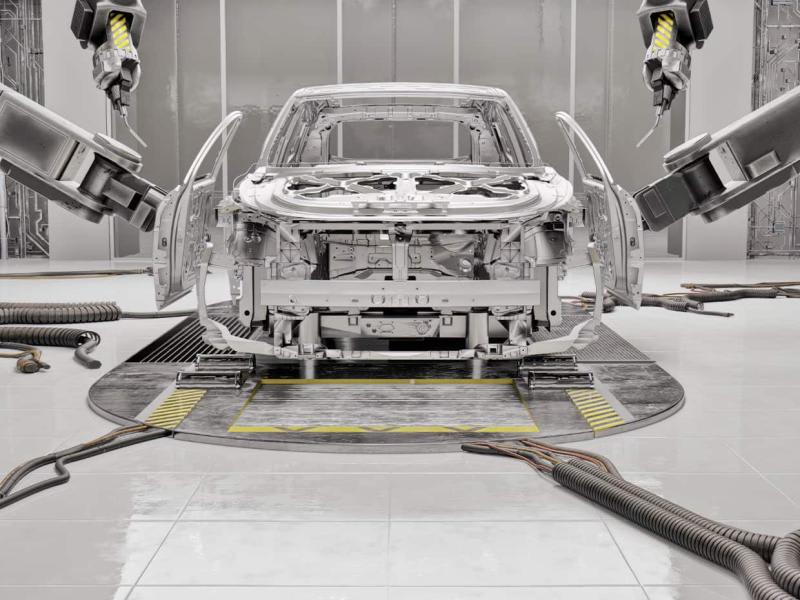Key takeaways
Listen to our recent webinar where RSM experts discuss the key automotive and mobility trends in 2024.
With 2023 now in our rearview mirror, it is time to look ahead and anticipate where the automotive industry is headed in 2024. While there has been no shortage of headlines in the news cycles about the struggles and opportunities for this sector, there are still some topics that dominate the international conversation.
For example, the electric vehicle (EV) revolution that we have all been looking forward to still has several obstacles to overcome, not the least of which is consumer adoption. We are also seeing some new players on the global automotive stage, which could mean good news for consumers but increased competition for EU and US manufacturers. And finally, the automotive supply chain continues to be scrutinised, due in large part to the challenges that were brought to light by the recent pandemic.
In our 2023 automotive outlook, we covered autonomous vehicle (AV) technology, global supply chain disruption, labour shortages, environmental, social, and governance (ESG) initiatives, consumer concerns over cost and obsolescence, automobile connectivity, and the evolution of vehicle safety. While all these topics continue to be top of mind, a few of them have seemingly taken centre stage.
In this article, we explore updates to some of our 2023 trends, with our subject matter specialists weighing in on what the future holds for us in 2024. Here to lend their expert opinions are Larry Keyler, Partner, Global Automotive Leader at RSM US; Jim Ward, Partner, Industrials Senior Analyst at RSM US; Mario van den Broek, Partner, Head of Business Consulting at RSM Netherlands; Markus Mühlenbruch, Partner at RSM Ebner Stolz; and Grand Lui, Manufacturing Leader at RSM Canada.
First, let us examine where we are on some of the trends we discussed last year, including EV, the supply chain, and ESG.
Consumer adoption of EV
For the time being, the EV movement may be stuck in neutral
The biggest story in the automotive sector for some time has been the electrification of vehicles. However, it appears that the EV movement has been dealt a bit of a reality check regarding the speed of consumer adoption. The close of 2023 in North America saw a marked pullback in consumer sentiment regarding EVs, signalling to Original Equipment Manufacturers (OEMs) that the speed of adoption of EVs may be a longer journey than anticipated.
However, in the background, we continue to see the development of autonomous technologies approaching, or fully adopting, Level 3 conditional driving automation on certain vehicles. According to the Society of Automotive Engineers, Level 3 refers to vehicles that are hands-and eyes-free (but still require human override).
‘It is expected that OEMs will continue to invest in this technology but recognise that aspirations of fully autonomous vehicles will extend into the next decade,’ says Ward.
In 2022, Ford stepped back from its joint venture with Volkswagen to develop the Argo. General Motors experienced its own setbacks during the development of its Cruise Origin driverless vehicle in 2023, with no expectation of any advances or production throughout 2024.
New players on the global scene
How will the growth of Indian and Chinese automakers affect the market?
A new wave of Chinese and Indian automakers and OEMs have begun marketing their products overseas in the EU, US, and Africa, where longstanding brands like Toyota and Volkswagen are losing significant market share. It remains to be seen how successful their push into these new markets will be, given that their competition in these markets is very well established.
“In recent years, Chinese auto manufacturers have significantly improved the quality of the vehicles they produce,” says Keyler. “Unfortunately, China is also challenged with brand awareness in the US and globally. However, continued improvement in quality and maintaining lower production costs have provided China an opportunity to gain a foothold in strategic global automotive markets.”
Similarly, India is poised to become the world’s top automobile manufacturer in the next five years. The country will also gain in exports too, with several OEMs announcing new investments over the next few years. India is currently number three in the global market, having overtaken Japan and leaving only the US and China ahead of it.
The question remains: how much consumer demand is there for Chinese and Indian automotive brands? The 80s and 90s saw Japanese automakers successfully erode the dominance of US brands. However, the geopolitical headwinds facing vehicles from China may be far greater.
“The U.S. Inflation Reduction Act (IRA) blocks EV tax credits of $7,500 from the purchase of cars that include components, and potentially minerals that emanate from China or other countries deemed a foreign entity of concern,”, says Ward. “In an effort to overcome this and other import-related obstacles, Chinese OEMs are exploring opportunities to build manufacturing facilities in Mexico, thereby overcoming the regulatory import obstacles.” It should also be noted that Chinese battery manufacturing giant CATL recently won a bidding process in Bolivia to develop the country’s significantly large lithium reserves. CATL specialises in manufacturing the lithium-ion batteries used to power EVs and, although it is still early days, the following developments could be greatly impactful to the EV market.
From this perspective, cost may drive culture, particularly in the EV market. Given the relatively high cost of such vehicles built in the US, if China can produce an EV that is affordable to the average consumer, without the need for tax incentives, such a cultural shift could indeed occur. “Leveraging decades-long acquisitions of critical materials and cost-effective production capabilities, these companies can offer automobiles that are 20-30% cheaper than established names, making them particularly appealing in price-sensitive markets’,” says Mario. “However, the success of these brands will hinge on their understanding and adaptation to regional consumer preferences.”
In terms of business ethos, Chinese and Indian carmakers often operate within different norms and values compared to their Western counterparts, bringing new perspectives to design, customer service, and marketing.
“The increased competition is going to challenge the traditional OEMs to think about their product development, marketing and supply chain,” says Lui. “The newcomers may have an advantage because they started off as an EV company. Traditional OEMs will need to manage the transition of their existing internal combustion engine (ICE) fleet while introducing new EVs to the market.”
This could significantly impact established European and American brands, compelling them to innovate and reconsider market strategies to stay competitive. This heightened competition may benefit consumers through a broader range of choices, potentially driving the entire industry towards faster technological advancements and more customer-focused services.
Vehicle ownership models
Getting from Point A to Point B may look very different in the future
As new generations of vehicle owners age into the market, they bring with them a whole new range of consumer sensibilities, concerns, and preferences. “Millennial consumers have demonstrated a diminished interest in vehicle leasing or ownership as a whole and shown a much greater willingness to utilise ride-share services,” says Ward. This has spawned discussions of alternatives to the legacy ownership model, and, potentially, a lack of ownership altogether. If that ends up being the case, how would this impact the automotive industry overall?
The move towards non-ownership models like leasing and car-sharing will necessitate a significant strategic shift for the automotive industry.
“This trend may lead to a decrease in individual car sales but opens new revenue streams in service-based models,” says Mario. “This could also lead to changes in vehicle design, prioritising durability, and adaptability for multiple users. Moreover, the focus might shift towards digital technologies for seamless access and user experience in shared mobility platforms.”
Clearly, economic headwinds can bring about changes in consumer spending, certainly in the new car ownership category. This is creating continued demand for used car sales as well as consumers holding on to their current vehicles longer than they normally would. Additionally, with interest rates remaining volatile, the cost of leasing is also on the rise. “As more technology and on-demand apps develop, and given the cost-effectiveness of ride-sharing alternatives, the cost of ownership becomes more difficult to justify, particularly with the younger generation of potential car owners,” says Keyler. “The OEMs are monitoring these trends closely to ensure the volume of production is aligned with consumer buying and needs.”
Cars as a service (CaaS)
Could an on-demand subscription model make leasing obsolete?
Lately, the automotive industry has begun to explore the concept of the Car as a Service (CaaS) model as an alternative to the existing leasing model, given that the current model relies heavily on assets. “These platforms allow users to access transportation on-demand, without the responsibilities and costs associated with ownership,” says Mario. “Secondly, subscription-based models for cars are emerging where customers pay a recurring fee for access to a vehicle, including maintenance and insurance, akin to leasing but with more flexibility.”
Similar to lease contracts, subscription to a car does require long-term financial commitments since the CaaS program is subscription-based and is subject to renewals. According to Keyler, there are advantages and disadvantages to this model.
Some key advantages include:
- Convenience: The Car as a Service (CaaS) model is very convenient for the users, and automobile companies are including a service component as well. Concierge services will provide customers with an enhanced customer experience with a monthly car subscription. The stressful aspects of car ownership will be taken care of by the concierge.
- Flexibility: Consumers in general, want alternatives depending on where they are going and the specific occasion. The Car as a Service (CaaS) model provides customers with this flexibility.
- Low-cost entry barrier: Buying a car is an expensive decision and requires a long-term financial commitment as well as a level of financial stability. The Car as a Service (CaaS) model allows for a greater number of consumers by have certain luxuries of mobility with the flexibility of a monthly subscription.
Some disadvantages include:
- More expensive: The Car as a Service (CaaS) model provides maximum flexibility and convenience; however, it may also be more expensive. Flexibility and convenience do come at a price.
- Obsolescence: Given how quickly technology is evolving, obsolescence risks for the car companies that own the cars present tremendous risks. As newer versions and model designs change, and become available to consumers, there may not be a market for the older cars.
Ultimately, the Car as a Service (CaaS) model has become a reality. Right now, it is only a small segment of the automobile market. However, trend analysis indicates that the usage of this model will see an upward trend in the future.
The rise of micro-mobility
It’s not just cars that are changing how we get around
It is virtually impossible to miss them: the electric scooters (e-scooters), bicycles, and electric bicycles (e-bikes) that have popped up on every street corner, in every city, all over the world. These vehicles represent the growing popularity of a recent trend known as ‘micro-mobility.’ The advantage of micro-mobility is that it offers a relatively low-cost and convenient form of transportation related to short trips in urban centres.
Automakers are expanding beyond traditional vehicles to include these compact, electric modes of transport, acknowledging their role in alleviating urban congestion and pollution. ‘It’s not just about diversifying products; it's a reimagining of the automotive industry's role in urban mobility,” says Mario. “This change is leading to an increased focus on integrated mobility solutions that blend cars, public transit, and micro-mobility.”
The increase in micro-mobility, particularly through e-bikes and e-scooters, is having a profound impact on the automotive industry, especially due to rising urbanisation. “This dynamic brings a large number of new competitors with different core competencies into the market and is putting pressure on established OEMs to adapt their business models,” says Mühlenbruch. “In view of this change, automotive companies must find innovative ways to keep pace with the challenges of micro-mobility and develop future-proof, integrated mobility solutions.”
What other impacts could this trend have on the auto industry, if any?
“At the end of the day, the most significant impact to cars from micro-mobility could come from regulatory pressure on cars in cities over time,” says Keyler. “In addition, micro-mobility could increasingly be used in combination with public transportation and Mobility-as-a-Service (MaaS) as part of an integrated, decarbonised urban mobility network - posing a greater challenge to personal car ownership.”
There are also infrastructure concerns to take into account. “Think about the required build-out of urban networks to support micro-mobility,” says Lui. “Will we see dedicated lanes and free parking for micro-mobility vehicles? What will the charging infrastructure look like? How will we support the startups that are building out shared micro-mobility vehicles? These are all questions that must be addressed at some point.”
Ultimately, growing demand for greener, more affordable mobility options – not to mention more user-friendly cities – may be the biggest factor driving adoption. “Many cities across the world are seeing growing densities coupled with the desire for greater green space, fewer parking lots and fewer cars as a whole,” says Ward.
The micro-mobility approach could potentially foster an environment where public spaces are repurposed for pedestrian use, community activities, and green areas, enhancing the urban landscape and quality of life. It could also lead to improved air quality and reduced noise pollution, creating a healthier environment for residents. “The absence of cars encourages the use of public transportation, walking, and cycling, which not only reduces carbon emissions but also promotes physical activity among the populace,” says Mario. “Furthermore, these changes can invigorate local economies by increasing foot traffic to businesses and fostering a sense of community.”
Automotive regulation in 2024
How will governments and automakers change the regulatory landscape in the coming year?
The growing demand for environmental, social, and governance (ESG) initiatives has been a huge driver of change within the auto industry and looks to continue doing so for the foreseeable future. New regulations in the EU and US are focussed on bringing transparency to sustainability targets. These new rules will most likely require organisations to shift their ESG approach from a focus on compliance and risk management to a process of reimagining and changing their overall business models.
“Specifically, automotive companies will need to consider how the requirements affect their approaches to developing decarbonisation transition plans, align their reporting with strategy to their business models and financial reporting requirements, implement improved risk management processes, and set up due diligence processes to identify and mitigate risks in their supply chains,” says Keyler. “As a result, biodiversity will be a critical focus looking ahead to 2024.”
These regulations continue to evolve and are more advanced in the EU than in any other area around the world. Currently, the US is accelerating their legislative agendas to align more directly with the EU on ESG. “The IRA legislation in the US is intended to influence the impact on reducing carbon emissions and align with the emission goals of the Paris Declaration on Electro-Mobility and Climate change,” says Ward. “The extension of $7,500 in tax credits through 2032, as well as investment in vehicle charging infrastructure across America, is an effort by the current administration towards its goal of having 50% of all new vehicles sold being electric by 2030. Regulations such as these have had a dramatic impact on the sale of EVs in America.”
There is also the rapid evolution of in-car technology and connectivity, which means OEMs and automakers will also be subject to digital regulations and privacy concerns. Navigating all the red tape while maintaining margins will be considerably more challenging than ever before.
“Digital regulations require increased investment in cybersecurity and data protection-compliant technologies,” says Mühlenbruch. “Companies that do not take this path will face regulatory challenges and could lose out on a sustainable, electrified future in the mobility industry. Having said that, consumer demand is nowhere near regulators’ goals, so we will have to see who catches on first.”
Local regulations in cities and financial incentives are increasingly being used to promote greener mobility. “Zoning laws, traffic restrictions, and low-emission zones are some of the regulatory tools being employed to discourage the use of polluting vehicles and encourage greener alternatives,” says Mario. “Financial incentives, such as subsidies for EV purchases, tax benefits for low-emission vehicles, and investment in charging infrastructure are all crucial in making sustainable options more accessible and attractive to the public.” Additionally, many cities are investing in improving public transportation and cycling infrastructure to provide viable alternatives to car travel. These local initiatives, supported by financial incentives, are essential in driving the transition towards more sustainable, efficient, and environmentally friendly mobility solutions.
Technological trends
Emerging tech stands to transform mobility
As always, the story of the automotive industry is tied to technology. Autonomous vehicles are increasingly showing up on the road in the form of autonomous buses, robo-taxis, and delivery robots or drones. The conversation around the next generation of power is also beginning to take shape, with discussions around renewable diesel, hydrogen fuel cells, and liquified natural gas (LNG) as a fuel. There is also the development of 5G vehicle-to-vehicle (V2V) communication, which would allow cars to communicate with each other and interface with the road for a more data-driven experience. Even the logistics industry is exploring concepts for the electrification of shipping and drone-based last-mile solutions for the delivery of goods.
In 2024, Europe's automotive and mobility sectors are poised to undergo transformative changes, with several of these key technologies emerging. “Among these developments, the most impactful in Europe are likely to be the next-generation power sources and 5G-enabled V2V communication,” says Mario. “The development and implementation of renewable diesel, hydrogen fuel cells, ammonia-based fuels, and LNG, along with the electrification of shipping, stand at the forefront, playing a vital role in Europe's transition to clean energy and reducing the transportation sector's carbon footprint.” Concurrently, the rollout of 5G technology is expected to revolutionise V2V communication, enhancing the efficiency, safety, and overall data-driven experience of driving, which is essential for the advancement of smart cities and autonomous driving across the continent.
That being said, the transformation of the car from a simple means of transportation to a networked system on wheels is having a significant impact on the entire value chain. “Central value creation is increasingly shifting to the software and semiconductor industries, which are the main drivers of this development,” says Mühlenbruch. “Traditional parts suppliers are confronted with a changing business model, leading to pressure, consolidation, and the need for repositioning. Suppliers need to adapt their portfolios to offer integration services for software and electronics. At the same time, they need to increase their focus on connectivity-supporting components.”
Key takeaways
Which key trends will dominate the narrative in 2024?
Despite all the promise and excitement of futuristic mobility, the industry will be challenged with a continued focus on maximising returns to investors. "Industry consolidation will continue in order to leverage the high fixed costs of investments by the automotive suppliers and required R&D investments necessary for new EV technologies,” says Keyler. “Robotics will expand throughout the supply chain and the OEMs to facilitate workforce challenges and improved efficiencies necessary to maximise profits.”
“In North America, OEMs will need to continue to maintain focus on production and investment in ICE vehicles while stabilising costs to consumers that already are feeling the challenges of owning or leasing new vehicles as a result of inflationary impacts of the past two years,” says Ward. “This will be important as OEMs will need profits from these vehicles to fund the investment necessary in 2024 and future years to continue to develop EVs and their underlying technologies.”
“Premiumisation is pushing many smaller and medium-sized automotive suppliers to their limits,” says Mühlenbruch. “To counteract a further shift out of Germany in this segment, the people involved should focus on the following five key issues: Investment in technological innovations, flexibility in production, increasing pressure on the volume structure, the location issue, and a focus on future-oriented business relationships.”
While large automotive suppliers have already adapted to new trends, many medium-sized companies are lagging behind the transformation. “In 2024, automotive suppliers should strengthen the resilience of their supply chains by relying on integrated planning, inventory optimisation and continuous risk analyses,” says Mühlenbruch. “Protection against rising prices can be achieved through hedging, passing on prices to customers and negotiating contractual purchase quantities.”
Another key strategy lies in the transformation of production to CO2-neutral manufacturing, considering current and future procurement criteria. Besides CO2-neutral manufacturing, automakers’ existing product portfolios should be reviewed for new fields of technology and reorganised, ideally based on existing core competencies.
With all of the pressures bearing down on them, automakers are nonetheless charging ahead into the future. “2024 is a year filled with optimism and opportunities for the automotive industry,” says Keyler. It remains to be seen where the automotive industry will end up in a year’s time, but the destination ahead looks promising.
If you have any questions related to any of the topics covered in this article, please contact us.









